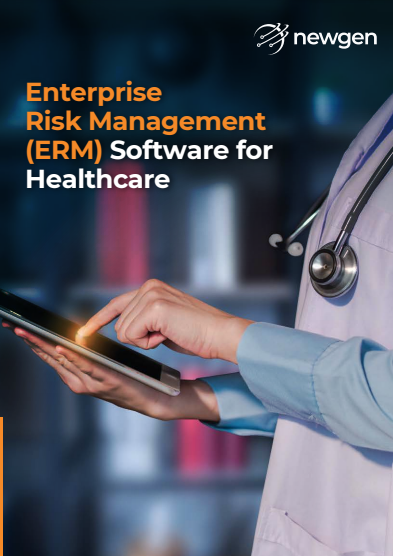The New Reality of Risk in Healthcare
Imagine standing at the top of a roller coaster that mix of anticipation, excitement, and anxiety before the big drop. That’s what managing risk feels like for today’s healthcare leaders. The stakes are high, with medical loss ratios (MLR), underwriting, regulatory compliance, patient safety, and financial stability all on the line.
In such a high-pressure environment, Enterprise Risk Management (ERM) emerges as a structured, strategic framework that enables health plans to identify, assess, and mitigate risks across the organization. Unlike traditional risk management, which focuses on isolated incidents, ERM offers a holistic, enterprise-wide perspective that integrates risk considerations into every strategic and operational decision.
For payers and health insurance companies, this shift is not just beneficial it’s essential. The growing complexity of value-based care (VBC), shifting patient expectations, and tightening regulations demand a proactive, AI-driven approach to managing enterprise risks.
Why ERM Is a Game Changer for Health Plans?
ERM empowers payers to predict, prepare, and perform turning risk management into a strategic enabler. By providing a unified view of risks across financial, clinical, and operational domains, ERM allows organizations to adapt quickly and make smarter, data-driven decisions.
Key Benefits:
- Optimized Workflows: ERM breaks down silos by connecting departments, streamlining coordination, and improving operational visibility.
- Informed Investments: With a comprehensive risk perspective, health plans can prioritize initiatives and allocate resources effectively.
- Simplified Compliance: ERM provides a structured framework for regulatory adherence, minimizing penalties and governance risks.
- Enhanced Patient Care: By addressing operational inefficiencies and mitigating clinical risks, ERM ultimately improves patient outcomes.
By adopting ERM, health plans gain resilience, agility, and competitive advantage, ensuring stability even amid uncertainty.
From Reactive to Proactive Risk Management
Traditional risk management focuses on reaction responding to incidents after they occur. ERM redefines this model through proactive, predictive, and intelligent management powered by AI and low-code automation.
A low-code digital transformation platform offers the agility needed to build, deploy, and adapt ERM applications quickly. This enables health plans to monitor, analyze, and mitigate risks continuously not occasionally.
Key outcomes include:
- Enterprise-wide visibility into risk indicators and trends.
- AI-driven analysis to identify and predict emerging threats.
- Dynamic workflows that adapt to regulatory or operational changes.
Building an Intelligent, Connected Risk Ecosystem
Healthcare organizations operate across multiple, interconnected domains each generating vast amounts of data. The key to effective ERM is integration: connecting processes, systems, and people under one unified digital framework.
Newgen’s suite of solutions supports this integration across five critical areas of healthcare operations:
1. Enterprise Content Management (ECM)
Managing sensitive healthcare records and documentation is one of the biggest challenges for payers.
With ECM, organizations can:
- Store all documents securely in a centralized digital repository.
- Enable anytime-anywhere access for authorized users.
- Integrate seamlessly with EHR/EMR systems.
- Ensure compliance with data privacy and security mandates.
Business Value:
Streamlined document management improves accuracy, ensures traceability, and supports compliance while enhancing member and provider experience.
2. Intelligent Business Process Management (BPM)
A robust BPM platform enables organizations to automate, orchestrate, and optimize end-to-end processes.
With BPM, health plans can:
- Accelerate claims processing while reducing errors.
- Gain real-time insights into operational performance.
- Maintain compliance with HIPAA, ACA, and CMS regulations.
- Continuously refine workflows for ongoing improvement.
Business Value:
BPM eliminates bottlenecks, enhances visibility, and drives efficiency enabling faster, compliant decision-making.
3. Customer Communication Management (CCM)
Effective communication is at the core of strong relationships between payers, providers, and members.
With CCM, organizations can:
- Deliver consistent, compliant, and personalized communications.
- Support omnichannel engagement (email, SMS, portal, print).
- Ensure timely updates on claims, policies, and services.
Business Value:
A connected communication strategy strengthens trust, improves satisfaction, and ensures transparency across all touchpoints.
4. Provider Lifecycle Management (PLM)
Providers are essential partners in delivering quality care. A comprehensive PLM solution ensures smooth collaboration throughout the provider relationship.
With PLM, organizations can:
- Automate onboarding, credentialing, and network management.
- Maintain a unified provider data repository.
- Ensure interoperability across core healthcare systems.
- Monitor provider performance and compliance in real time.
Business Value:
PLM reduces administrative friction, improves accuracy, and ensures compliance with CMS, NCQA, and other regulations.
5. Complaints, Appeals, and Grievances (CAG) Management
Handling complaints and grievances effectively is vital for maintaining compliance and member trust.
With a CAG solution, organizations can:
- Capture and manage cases from multiple channels.
- Automate case routing and resource allocation.
- Track case progress with comprehensive dashboards.
- Simplify audit readiness with end-to-end traceability.
Business Value:
CAG automation ensures timely resolution, transparency, and improved member satisfaction while reducing compliance risks.
The Newgen Advantage
Newgen’s AI-enabled unified digital transformation platform brings all the pillars of ERM automation, content, communication, and collaboration under one roof.
Platform Highlights:
- Low-code agility: Rapid development and deployment of ERM applications.
- AI-driven risk intelligence: Early detection and mitigation of enterprise-wide threats.
- Seamless interoperability: Integration with EHRs, claims systems, and regulatory databases.
- Cloud scalability and security: Ensures compliance and resilience in evolving environments.
Outcomes for Healthcare Enterprises:
- Improved regulatory compliance and audit readiness.
- Enhanced operational visibility and agility.
- Reduced risk exposure and improved patient safety.
- Unified governance for enterprise-wide resilience.
Shaping the Future of Healthcare Risk Management
Healthcare organizations cannot eliminate risk but they can manage it intelligently. A modern ERM framework supported by automation and AI transforms risk management from a defensive function into a strategic differentiator.
By partnering with Newgen, health plans can create a connected, compliant, and proactive ecosystem where risks are identified early, decisions are data-driven, and patient outcomes are consistently enhanced.

